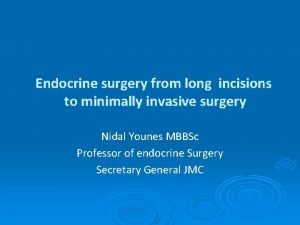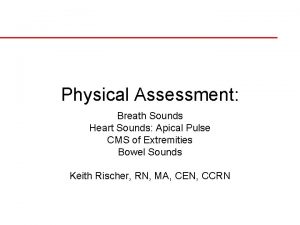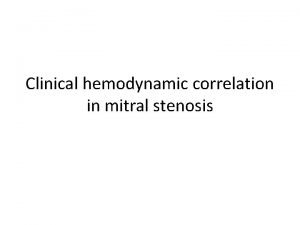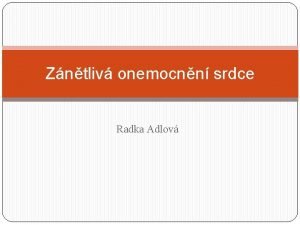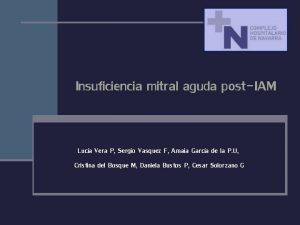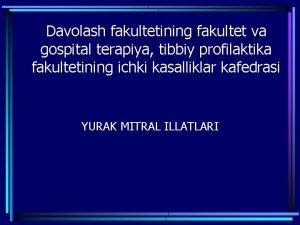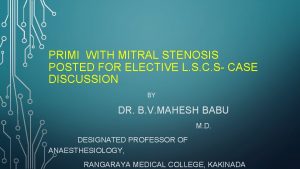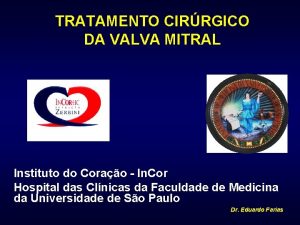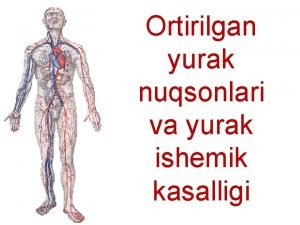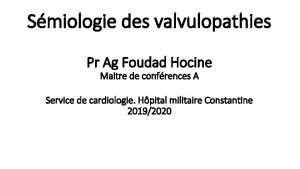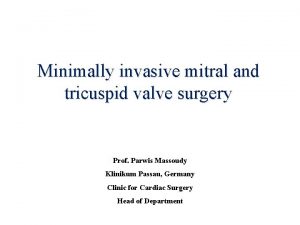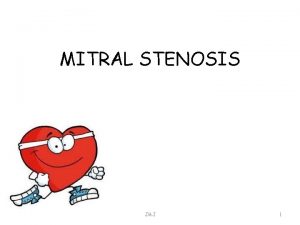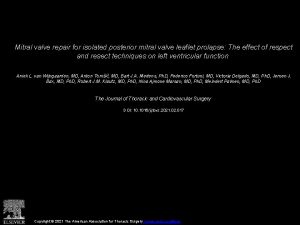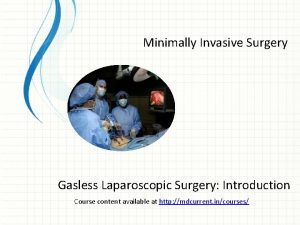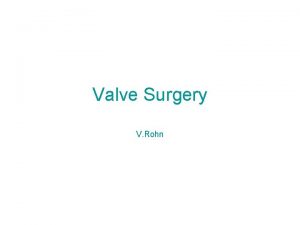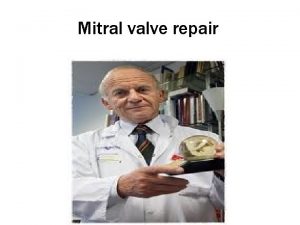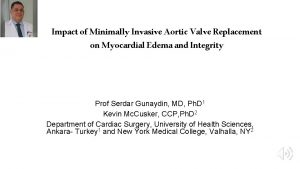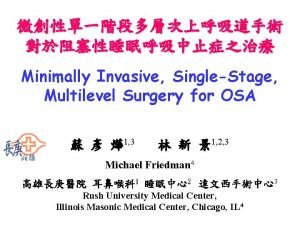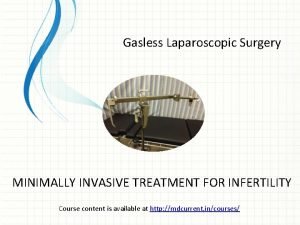The Importance of Minimally Invasive Mitral Valve Surgery























- Slides: 23

The Importance of Minimally Invasive Mitral Valve Surgery Niv Ad, MD Washington Adventist Hospital and West Virginia University

Disclosures Niv Ad, MD Medtronic Inc. - Speaker Liva. Nova Inc. - Speaker, Consultant Atricure Inc - Consultant Nido Surgical - Advisory Board Left Atrial Appendage Occlusion - Co-Owner

Current State of Affairs • In the U. S. the percentage of mitral valve repairs via a minimally invasive approach is hovering around 15 -20%. . . • …This, despite over 20 years of experience and a plethora of papers… too numerous to count… validating the safety, efficacy, and durability of the approach. • Pubmed search for minimally invasive mitral valve repair currently lists of close to 1500 papers WHY? ?

Barriers to Adoption…. • Reluctance of experienced surgeons, both academic and community, to leave the safe harbor of sternotomy. • The perception of a dangerously steep learning curve. • Lack of sufficient volume to be comfortable with change. • Zero-tolorance for failure of repair among referring physicians. • Concern about reported increased risk of stroke. Fundamentally many surgeons don’t believe its better, or even as good, as sternotomy.

Why Is It Important? • Patients want it – We can always talk them out of it ?

Minimally Invasive Mitral Valve - 1997 -Using the same principles of repair we can achieve at least the same repair rates and outcomes with a less invasive approach than with median sternotomy -Minimally invasive surgery has distinct advantages over sternotomy ü Less trauma = less pain ü Shorter length of stay ü Faster overall recovery ü Dramatically improved patient satisfaction

Goals of Mitral Valve Repair 1. Repair Rates of 90 -100% for degenerative disease. 2. Excellent Mortality = 0% 3. Excellence in all quality measures *Decreased Complications *Decreased A-Fib *Decreased Blood Transfusions *Decreased Length of Stay *Decreased Cost *Increased Patient Satisfaction

Minimally Invasive Mitral Valve Surgery Evolution: Basic Platform Options • Right Mini-thoracotomy • Cannulation • • • Myocardial Protection • Imaging and Instruments • • • Double Lumen Tube Femoral Artery vs Axillary Artery Femoral Vein Internal Jugular Vein Cross Clamp – Endo-Balloon – Chitwood Clamp Antegrade Cardioplegia Retrograde Cardioplegia Continuous Fibrillation Direct Vision Thoracoscopic Robotic

Indications and Contraindications for MI Surgery

Patient Set Up

Operative Technique: The Same Principles as Sternotomy Mitral Valve Repair – Standard Techniques – Establish Leaflet Coaptation – – • • • Resection Neochord Construction Alfieri Maneuvers Restore Annular Geometry Rigid/Flexible Band or Ring Surgical Ablation for Atrial Fibrillation • Cryo Cox Maze III using argon based technology

Results

Mitral Repair Outcomes Compared to the 2011 STS ACSD Nationally Reported Outcomes for Mitral Valve Repair

Two- Year Cumulative Survival:

CONCLUSIONS: A minimally invasive approach for mitral valve surgery on a fibrillating heart was not associated with a greater incidence of stroke/TIA than was median sternotomy. When performed by highly experienced surgeons, the minimally invasive approach with fibrillatory arrest did not increase the risk of perioperative stroke.

All Isolated Mitral Valve Repair and/or Cox. Maze III Surgical Ablation 2007 -2018 1200 1030 800 670 600 400 360 200 0 Midsternotomy Minimally Invasive Total Cases

• Total = 670 • • • Outcomes DSWI = 0 Stroke = 2(0. 3%) TIA = 3(0. 5%) Prolonged Ventilation (>24 hours)=15(2. 2%) Pneumonia = 2 (0. 3%) Reoperation for Bleeding = 3 (0. 5%) Renal Failure = 1 (0. 2%) Renal Failure Requiring Dialysis = 0 Operative Death (<30 Days)=1 (0. 2%) (POD 29, Suspected PE) Readmission <30 days = 30 (6%) Median [IQR] LOS = 3[2 -4] Days





Summary

Thank You
 Minimally invasive surgery
Minimally invasive surgery Tendyne mitral valve
Tendyne mitral valve Apical pulse and mitral valve
Apical pulse and mitral valve Ef slope in echo
Ef slope in echo Pht mitral valve
Pht mitral valve Minimally conscious state
Minimally conscious state Difference between proportional valve and servo valve
Difference between proportional valve and servo valve Heart disease
Heart disease L
L Valvula mitral
Valvula mitral Iam
Iam Lvvo heart
Lvvo heart Aortal illatlar
Aortal illatlar Mitral stenosis measurements
Mitral stenosis measurements Estenose mitral
Estenose mitral Mitral facies
Mitral facies Valva mitral
Valva mitral Score wilkins estenosis mitral
Score wilkins estenosis mitral Tendinous cords
Tendinous cords Palpable p2
Palpable p2 Mitral klapan stenozi
Mitral klapan stenozi Dome de bard
Dome de bard S2 os gap
S2 os gap Mitral regurgitation murmur
Mitral regurgitation murmur
